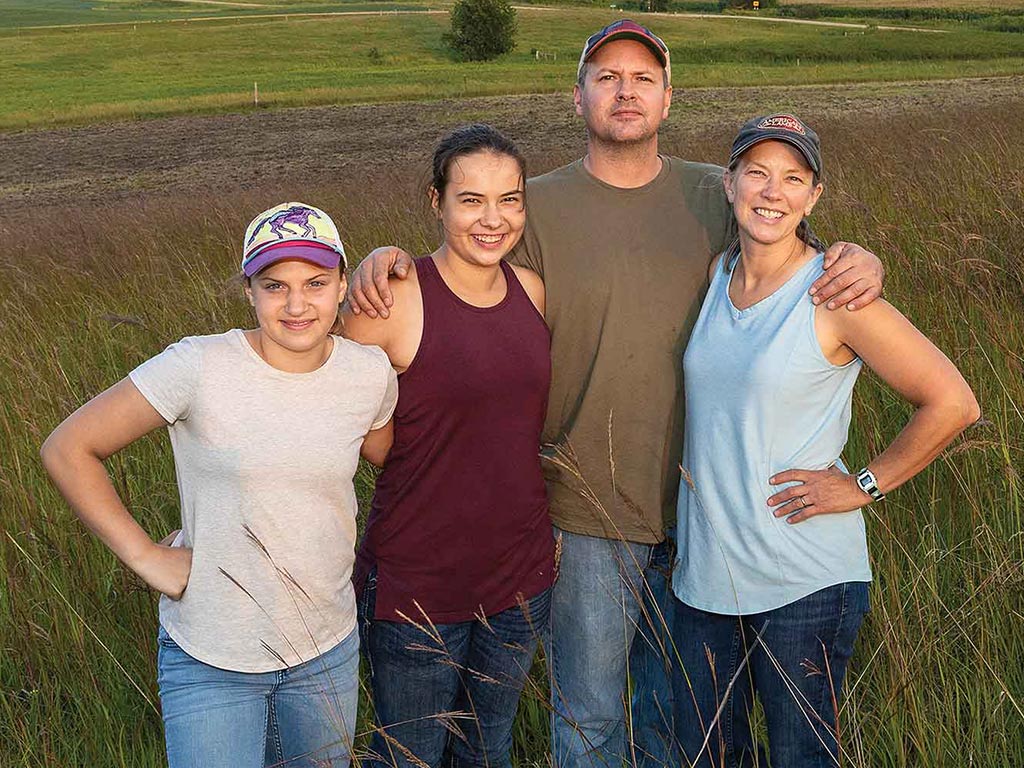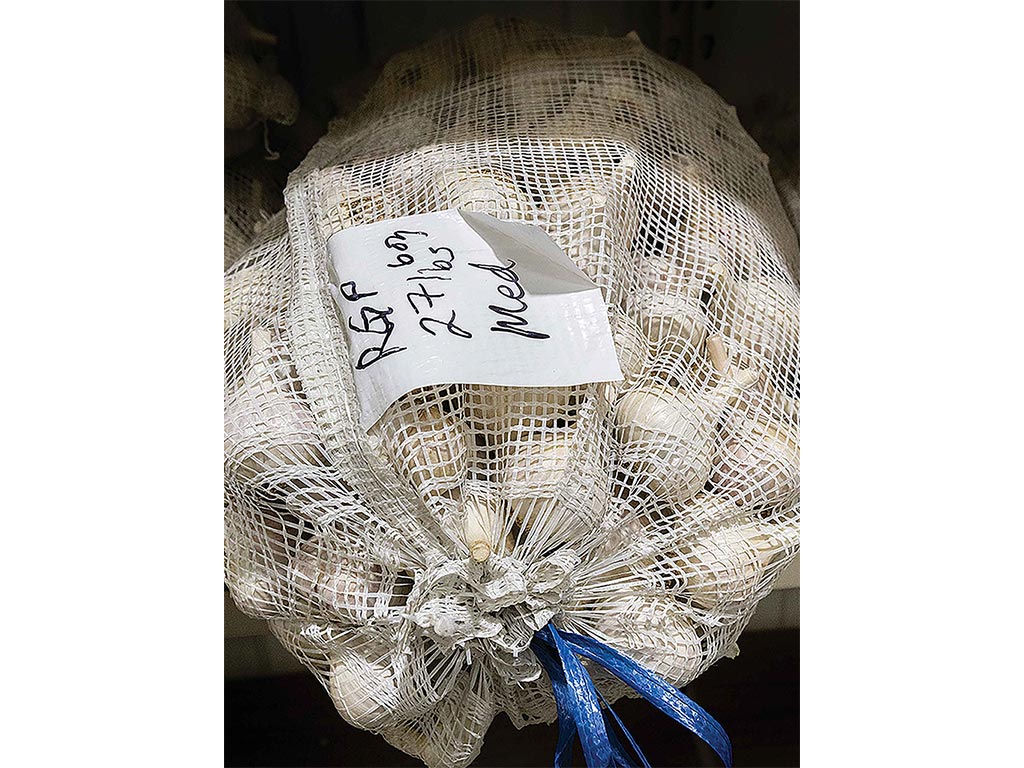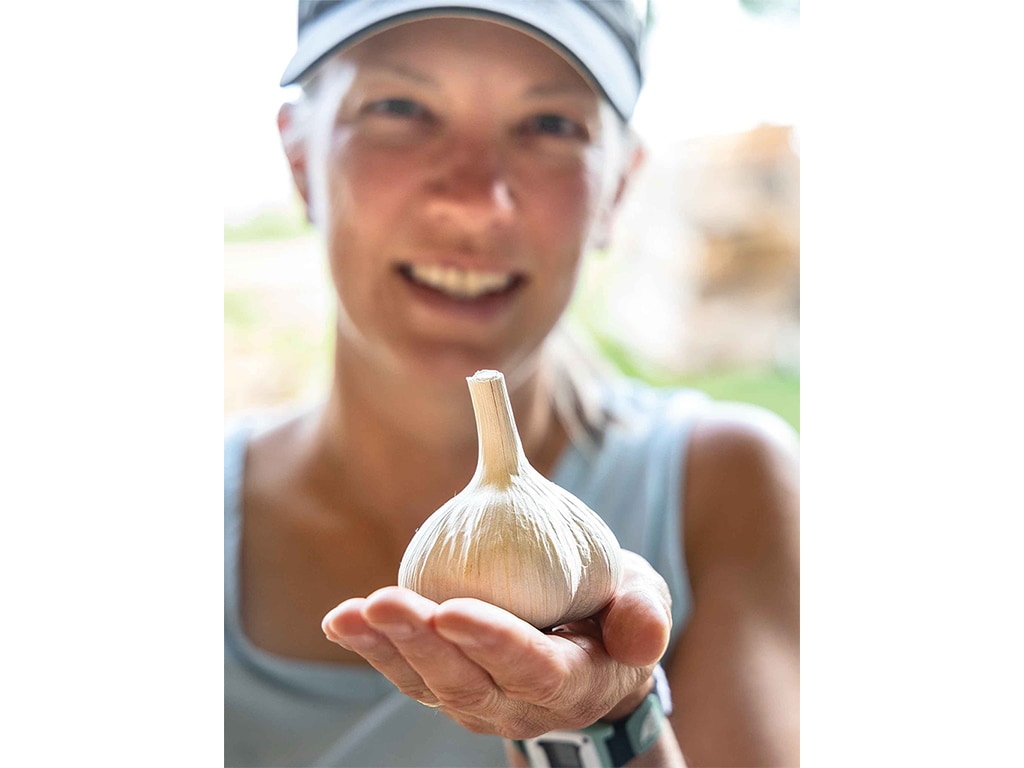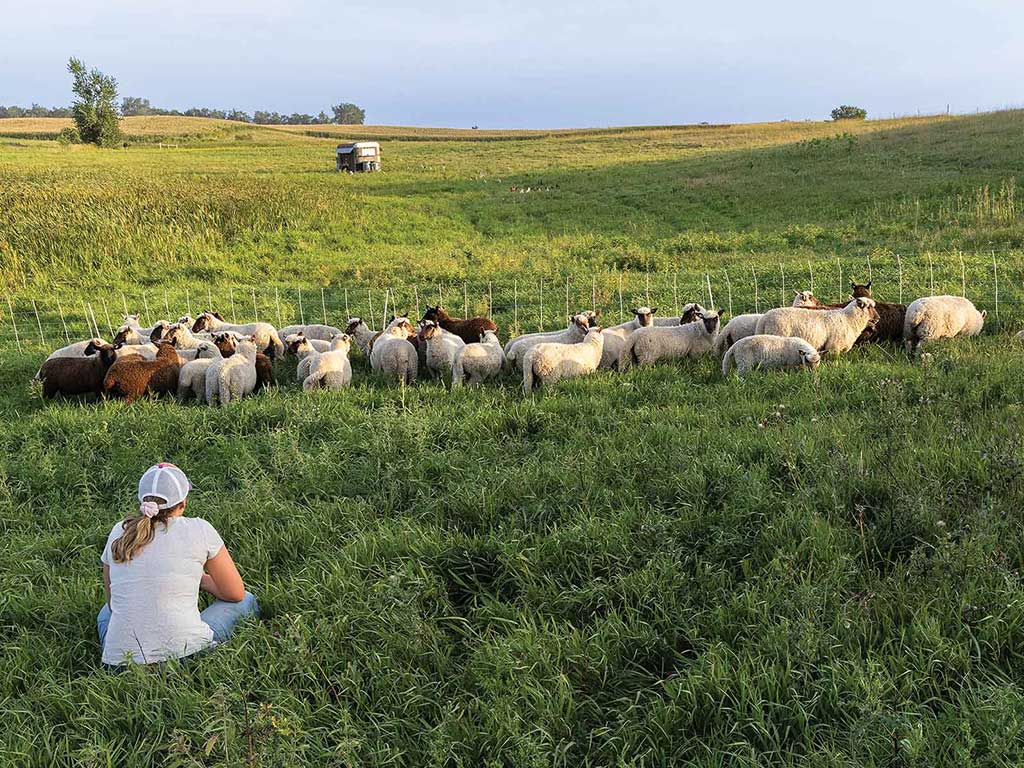Agriculture, Farm Operation March 01, 2024
One Groovy Garlic Farm
.
Plus, a bonus: Grassfed lamb!
Last August found Kristianna and Nick Siddens and daughters Luna and Georgia snapping stalks from garlic bulbs before sorting them for seed markets. Clun Forest sheep quietly grazed a nearby lush pasture. Their llama Pfeffer cavorted with the sheep while protecting the herd from snarling coyotes. Farm cats rubbed up against a visitor's leg, begging for a belly rub. Perennial native grasses danced in the dusk breeze during a scarlet sunset.
In short, it was just another day at the bustling Prairie Coteau Farm, which bills itself as South Dakota's oldest and grooviest garlic farm near Astoria. It's akin to what Kristianna observed during a stint working on an Illinois organic farm following college graduation.
"I loved it," says Kristianna. "The farm family all participated, even the little kids. I thought it was such a great way to grow up."
It was.
Like any good story, though, there's a story behind the story.
The start. Kristianna is a city girl who initially grew up in St. Louis. She later moved with her family to Altamont, Illinois.
"That gave me a rural experience that I enjoyed," she says.
Nick, who grew up on a nearby dairy farm, befriended Kristianna. Both pursued separate ventures after high school. After working on the Illinois organic farm, Kristianna did a stint in the Peace Corps as an agroforestry specialist in western Africa. Meanwhile, Nick worked in the wind industry in eastern South Dakota.
However, they kept in touch. The area in which Nick lived captured Kristianna's interest, as her grandparents had lived close by near Brookings, South Dakota.
"He bought this little farm up here, and that was a bit of an allure for me," Kristianna says. "He knew I wanted to do something in agriculture, so he asked me to come up here."
She did. They married and started Prairie Coteau Farm in 2004 as a Community Supported Agriculture (CSA) farm.
"We grew all kinds of different vegetables," Kristianna says. "I was the primary farmer, with my husband working off the farm."
After four years, the Siddens refocused. The intense CSA workload—growing multiple crops, managing employees, and spending weekends at farmers' markets—didn't fit well with starting a family.
"It also just so happened that we grew really nice garlic," says Kristianna. "There was an opening in this part of the country for a [garlic] seed provider."
So, they instead concentrated on seed garlic on one acre of their farm. Seed garlic differs from culinary garlic in that it is typically larger and more uniform. They found a type called hardeck garlic that grew best in northern climates.
"Our best selling variety is known to be really spicy," says Kristianna. "If you are a garlic lover, you will love the bite of this one."
September and October plantings fare far better than spring plantings, as it gives garlic a headstart on growth. They modified a vegetable transplanter to match their row spacings.
"We plant cloves 3 inches deep and put 6 inches of mulch around them," explains Nick. "The mulch protects the garlic from frost and stabilizes the temperature so it doesn't winterkill."
Like other crops, pests exist. "We do what we can to minimize the weed seed bank through mulching, but we still have to do one round of hand weeding," says Kristianna.
Diseases ranging from bacterial wilt to white rot can infect garlic. Insects such as bulb mites also infest garlic.
"There is a lot that can go wrong," says Kristianna. The good news is that most pests are soil-borne and can be minimized by following up with four years of grass pasture following garlic, she adds.
Harvest starts in July, with the Siddens first mowing stalks followed by unearthing garlic bulbs with an undercutter blade. Bulbs are dried for two weeks before they cut remaining stalks with a pneumatic trimmer. Shipping bulbs to seed customers starts in September.
Above. Georgia, Luna, Nick, and Kristianna Siddens planted native grass pastures nearly 10 years ago. Besides conserving highly erodible soil, this area also provides mulch for garlic production and sheep grazing. The bag contains garlic set for shipping to seed customers. Seed garlic is larger and more uniform than culinary garlic. Georgia Siddens watches the family's herd of Clun Forest sheep. The Siddens added the flock in 2016 to diversify farm income, provide on-farm fertility, and use the farm's pastures.
Clun Forest sheep. They also have diversified their farm with 75 head of Clun Forest sheep.
"They are bred for finishing on grass," says Kristianna. "Ewes also have good mothering instincts and produce lots of milk."
The Siddens directly market their sheep, with additional sales made through online farmers' markets. They process their sheep 40 miles away in Elkton, South Dakota.
Besides income, sheep add fertility to the farm via their manure.
"We used to buy a composted manure product," says Kristianna. "We now have eliminated that product with the sheep."
Besides the grass pastures rotated with garlic, grazing areas also include two plots of native grass they planted over 10 years ago. These areas also provide mulch for the garlic. Soil health has improved on both native grass areas and sheep pastures they have seeded following the year of garlic.
"The next time we come back into those pastures for growing garlic, you can see the changes," says Nick. "Our earthworm population is higher, and our soil erosion is less. The garlic also uses water better. We don't irrigate, but with the mulch and rotation we have, garlic has not been water stressed."
Twenty years later, Kristianna reflects on Nick's invitation to her after he bought the farm back in 2004.
"He said, 'We'll do something with this little farm.' I'm glad we did." ‡
Read More

EDUCATION, LIVESTOCK/POULTRY
Cut, Cut…Chop!
Meat collective teaches home cooks to break down whole animals.

AGRICULTURE, LIVESTOCK/POULTRY
The Land of Chicken, Beef, and Honey
Diversity powers this southwest Kansas farmer's soil health journey.





